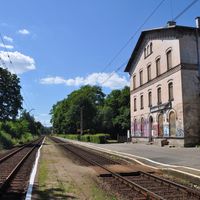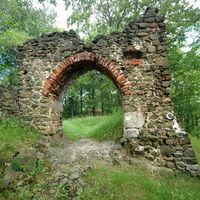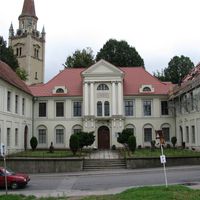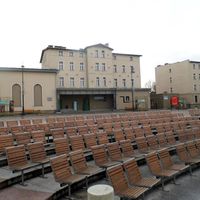Wałbrzych
8.39

Overview
Wałbrzych, a city with county rights in southwestern Poland, is nestled in the picturesque region of the Western Sudeten Foothills and the Central Sudetes. Its rich history dates back to the Middle Ages, with the first documented references linked to its establishment in the early 14th century. Once known for its coal mining industry, the city has undergone a significant transformation, evolving from a mining hub into a historic and cultural center of Lower Silesia. The architecture of Wałbrzych is distinguished by Książ Castle, one of the largest in Poland, as well as numerous palaces and religious sites, such as the Church of Our Lady of Sorrows and the 18th-century Evangelical parish church. Wałbrzych is also characterized by its unique urban layout, shaped by the hilly terrain, which adds to its charm. The city's cultural life thrives through various institutions, including the Wałbrzych Cultural Center, the Sudeten Philharmonic, and the Jerzy Szaniawski Drama Theatre, hosting numerous festivals, exhibitions, and artistic events. Wałbrzych is also home to renowned higher education institutions and research centers, such as the Angelus Silesius University of Applied Sciences. An interesting fact is the "Wałbrzych Preventive Dental Care Program," which covers children and adolescents, as well as an international diagnostic center collaborating with foreign institutions. However, the city faces challenges stemming from economic transformation and declining employment, reflected in unemployment issues. Wałbrzych is also becoming an increasingly popular tourist destination, attracting visitors with its natural beauty and recreational offerings, including extensive cycling trails and activities in local parks. In summary, Wałbrzych is a city with a rich history, fascinating architecture, vibrant culture, and unique attractions that appeal to both residents and tourists.
Trip Plans
Location
Tickets
Powered by GetYourGuide
You can also find here:

Książ Castle
8.33
Wałbrzych

Golden Train
8.04
Wałbrzych

Nowy Dwór Castle in Wałbrzych
7.32
Wałbrzych

Old Castle
7.22
Wałbrzych

Sudetes Wałbrzyskie Landscape Park
6.83
Wałbrzych

The Porcelain Museum in Wałbrzych
6.69
Wałbrzych

Mausoleum in Wałbrzych
6.22
Wałbrzych

Jerzy Szaniawski Drama Theatre in Wałbrzych
6.12
Wałbrzych

Wałbrzych Główny
6.11
Wałbrzych
2025 Wizytor | All Rights Reserved